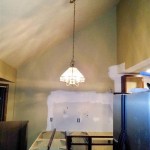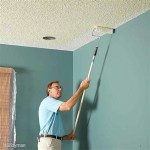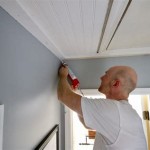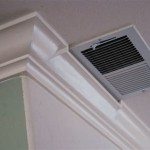KDK Ceiling Fan Remote Control Not Working: Troubleshooting and Solutions
KDK ceiling fans are known for their quality and reliability, often incorporating remote control functionality for added convenience. However, a non-functional remote control can be a source of frustration. This article will provide a comprehensive guide to troubleshooting common issues that cause KDK ceiling fan remote controls to stop working, along with potential solutions to restore functionality.
The remote control system in a KDK ceiling fan consists of several components working in concert. The remote itself transmits signals, a receiver unit within the fan housing interprets these signals, and the fan motor responds accordingly. Any disruption in this chain can lead to a malfunction. Understanding the potential sources of the problem is crucial for effective troubleshooting.
Checking the Basics: Batteries and Line of Sight
The first and simplest step in troubleshooting a non-functional KDK ceiling fan remote is to address the most obvious potential issues. These typically involve the remote’s power source and its ability to communicate with the fan’s receiver.
Begin by examining the batteries in the remote control. Even if the remote seems to be transmitting (indicated by a light or display), weak batteries can often lead to unreliable performance or complete failure. Replace the batteries with fresh ones of the correct type (usually AAA or AA alkaline batteries). Ensure the batteries are inserted with the correct polarity, matching the positive (+) and negative (-) markings inside the battery compartment. It’s generally recommended to replace all the batteries at the same time, even if only one seems to be depleted. Avoid mixing old and new batteries, or batteries of different brands, as this can affect their performance and lifespan.
Next, consider the line of sight between the remote control and the fan unit. Obstructions such as furniture, walls, or even thick curtains can interfere with the infrared (IR) or radio frequency (RF) signal used by the remote. Try pointing the remote directly at the receiver on the fan, moving closer to the fan if necessary. Eliminate any potential obstacles that might be blocking the signal. Some KDK ceiling fans have a designated receiver window, which is typically a small, dark plastic component on the fan’s housing. Ensure this window is clean and unobstructed.
If replacing the batteries and clearing the line of sight doesn't resolve the issue, the problem likely lies elsewhere. It's important to systematically investigate other potential causes before considering more drastic measures, such as replacing the remote or the receiver unit.
Addressing Potential Interference and Signal Issues
Beyond basic considerations, interference and signal issues can often be the root cause of remote control malfunctions. These can stem from other electronic devices, or from problems with the remote or receiver itself.
Interference from other electronic devices can disrupt the signal between the remote and the fan. Common culprits include fluorescent lights, dimmer switches, and some types of electronic ballasts. Try turning off nearby electronic devices, especially those known to emit infrared or radio frequency signals, to see if this resolves the issue. If the remote starts working after turning off a specific device, it's likely that device is causing interference. Consider relocating the interfering device or using shielded cables to minimize its impact.
Another potential signal issue relates to the frequency used by the remote and receiver. Some KDK ceiling fans allow the user to change the frequency setting to avoid interference from other devices using the same frequency. Consult the fan's user manual for instructions on how to adjust the frequency settings on both the remote and the receiver. It's critical that both the remote and the receiver are set to the same frequency for proper communication. If the frequency settings have been inadvertently changed, restoring them to the default settings might resolve the problem.
In some cases, the remote control itself may be malfunctioning. This could be due to damaged internal components, such as the infrared transmitter or the radio frequency antenna. To test the remote, use a digital camera or smartphone camera to check if the infrared transmitter is emitting a signal. Point the remote at the camera lens and press a button. If the remote is transmitting properly, you should see a faint light emitted from the transmitter on the camera's screen. If you don't see a light, the remote may be faulty and need to be replaced. For RF remotes, this test won't be effective, and professional testing might be required.
If after checking these considerations the remote is still not working, the receiver unit in the fan might be the source of the problem. This requires more in-depth troubleshooting and possibly electrical testing.
Examining the Receiver Unit and Wiring
The receiver unit, typically located inside the fan's canopy, is responsible for interpreting the signals from the remote control and controlling the fan's motor and lights. Problems with the receiver itself, its wiring, or its power supply can all contribute to remote control failure.
Accessing the receiver unit requires turning off the power to the ceiling fan at the circuit breaker. Safety is paramount when working with electrical components. Once the power is off, carefully remove the fan's canopy to expose the wiring and the receiver unit. Examine the wiring connections to the receiver unit, ensuring that all wires are securely connected and that there are no loose connections or damaged wires. Look for signs of overheating, such as melted insulation or burnt wires. If any wiring issues are found, carefully re-secure the connections or replace the damaged wires, following proper electrical safety procedures.
The receiver unit itself may have undergone damage, potentially from power surges, overheating, or simply age. Visually inspect the receiver for any signs of damage, such as burnt components, cracks, or swelling. If the receiver appears damaged, it will likely need to be replaced. It's crucial to use a compatible replacement receiver that is specifically designed for your KDK ceiling fan model. Using an incompatible receiver can lead to further damage and potentially create a safety hazard.
Another potential issue is that the receiver unit is not receiving power. Use a multimeter to test the voltage at the receiver's power input terminals. Ensure that the receiver is receiving the correct voltage as specified in the fan's user manual. If the receiver is not receiving power, the problem may lie in the wiring from the circuit breaker to the fan, or in a faulty circuit breaker. A qualified electrician should be consulted to diagnose and repair any electrical wiring issues.
If after carefully examining the receiver unit and its wiring you suspect it is the source of the problem, replacing the receiver unit is often the most effective solution. Make sure to follow KDK's specific instructions or consult a qualified electrician for a safe and correct installation. Before replacing the receiver, document the existing wiring configuration to ensure the new receiver is wired up correctly.
It is important to reiterate that working with electrical components can be dangerous. If you are not comfortable working with electricity, it's best to consult a qualified electrician to diagnose and repair the problem.
In the event that the remote control and receiver unit have been thoroughly tested and deemed functional, but the fan still doesn't respond, the problem may lie with the fan motor itself. However, this is less likely to be related to remote control functionality. Repairing a faulty fan motor is a separate issue and often requires specialized knowledge.
This article has covered a range of potential problems and solutions to address a KDK ceiling fan remote control that is not working. By systematically following the troubleshooting steps outlined, users can often diagnose and resolve the issue, restoring the convenience of remote control operation. If the problem persists after exhausting these steps, contacting a qualified electrician or KDK customer support is recommended.

Kdk Ceiling Fan Remote Control Ky14es F My14c5 My14r1610zn Replacement

Kdk Ceiling Fan Remote Control Replacement Lazada

Convenient Universal Electric Fan Remote Control Easy To Use Replacement

Kdk Old Ceiling Fan Remote Control Replacement Lazada

Kdk K14x2 Pbr Remote Control Ceiling Fan Johor Bahru Jb Malaysia

Remote Control Type Kdk Fans Malaysia

Remote Control Series Kdk Company Division Of Pes

Kdk Remote Control Type K14x2 140cm 56 Selangor Malaysia Kuala Lumpur Kl Puchong Supplier Suppliers Supply Supplies Lumiere Lighting Trading

Kdk K14xz Pbr Z Series Remote Control Ceiling Fan Johor Bahru Jb Malaysia Jaya Wholer Supplier Supply Supplies B L Electric Sdn Bhd

Kdk K15z5 Rey 5b Long Pipe Remote Control Type Ceiling Fan Selangor
Related Posts








